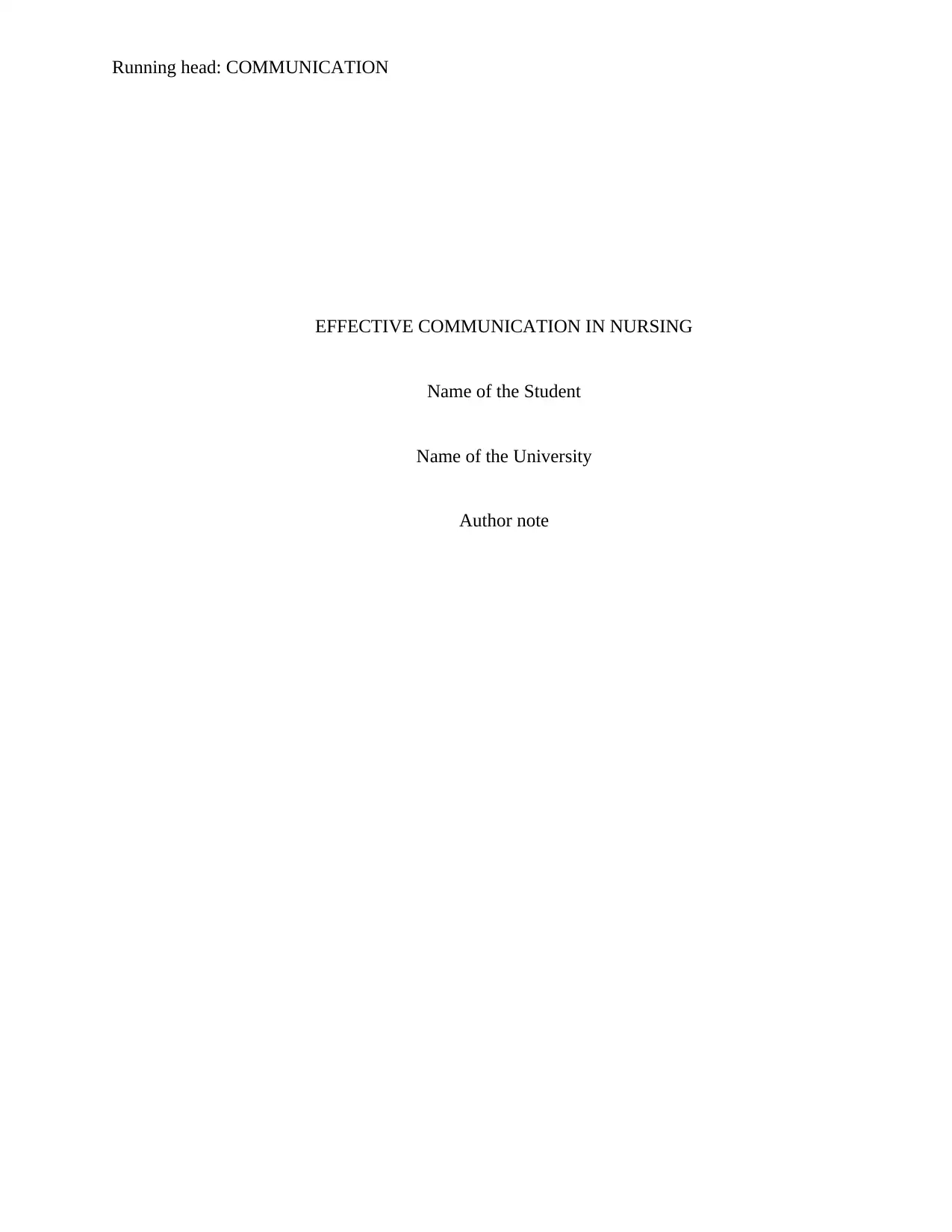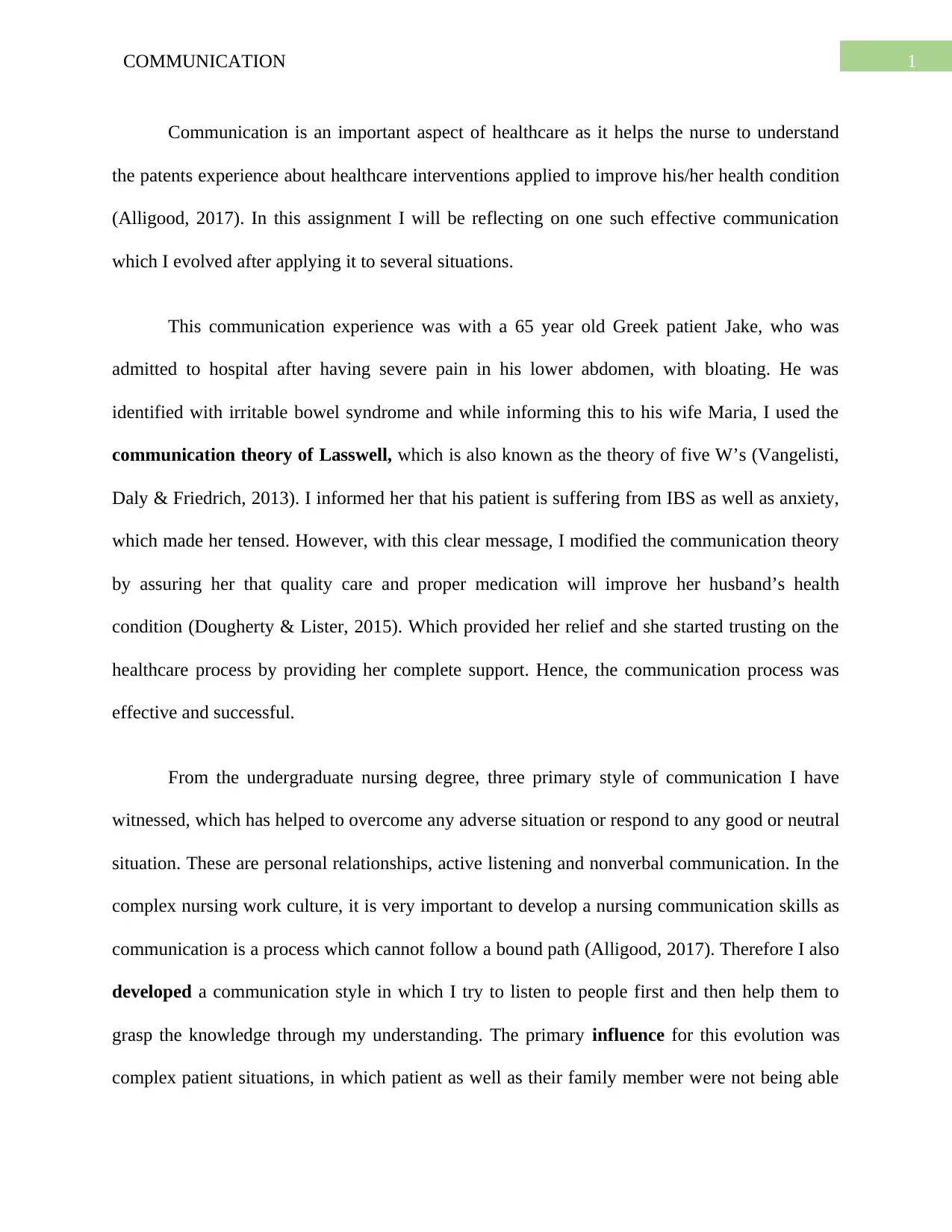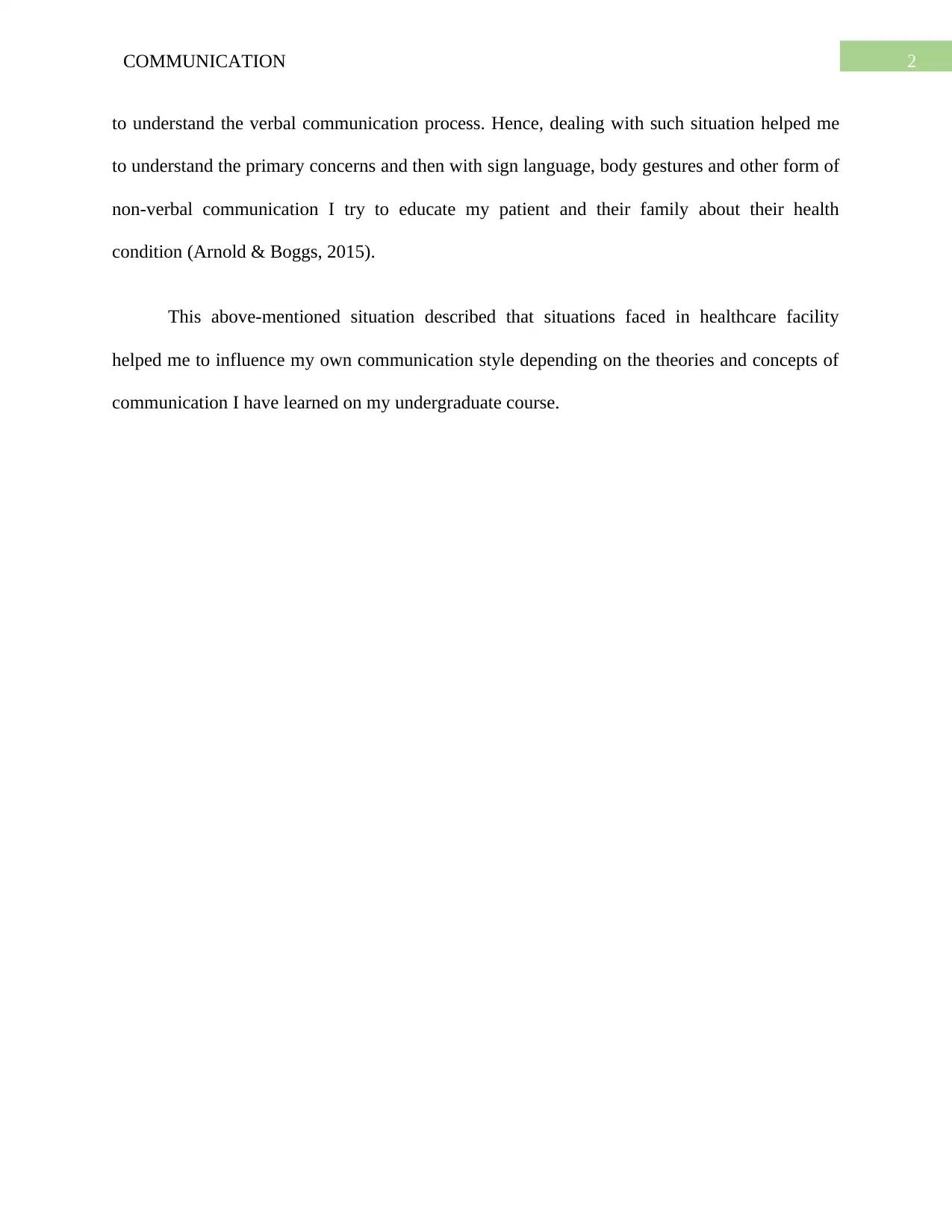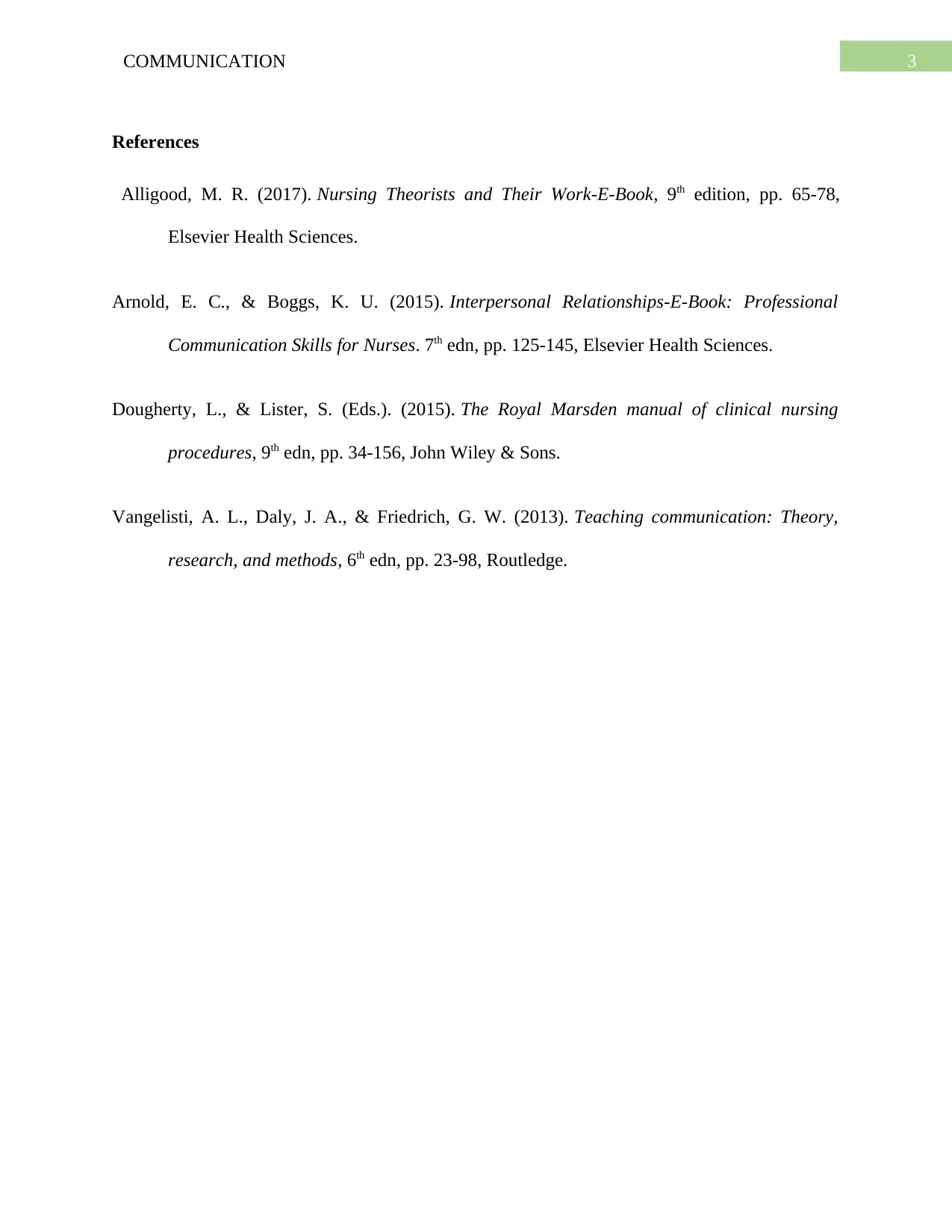Effective Communication Strategies in Nursing: A Report Analysis
VerifiedAdded on 2023/06/10
|4
|596
|153
Report
AI Summary
This report explores the significance of effective communication in nursing, emphasizing its role in enhancing patient care and understanding. The author reflects on a personal experience with a 65-year-old patient, highlighting the application of Lasswell's communication theory and its modification to address patient and family concerns. The report discusses the development of communication skills, including personal relationships, active listening, and nonverbal communication, as influenced by real-world clinical scenarios. It underscores the importance of adapting communication styles to meet diverse patient needs, especially in complex healthcare environments where clear and empathetic communication is crucial for improving patient outcomes. The report references relevant literature to support the concepts discussed, providing a comprehensive analysis of communication strategies in the nursing profession.
1 out of 4











![[object Object]](/_next/static/media/star-bottom.7253800d.svg)